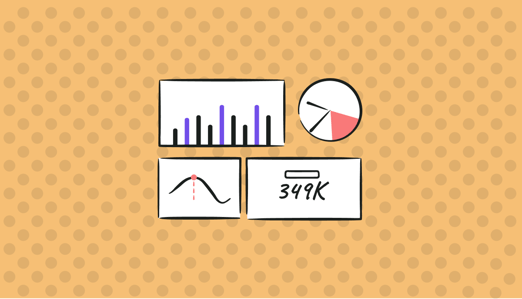
Accidental overspending in the cloud is one of the biggest issues faced by FinOps teams. Something as small as cache misconfiguration can throw off your cloud spend and cause thousands of dollars in surprise costs. Just look at what happened to the "Have I Been Pwned" owner in early 2022.
To keep sticker shock at bay, organizations across the world are experimenting with cost anomaly detection. The idea is to quickly identify unusual and unexpected changes in cloud cost patterns. Do this early enough and you'll be able to take timely corrective measures to prevent any adverse impact on your monthly cloud bill.
Here are the top four tips for detecting cloud cost anomalies in your infrastructure.
1. Define a baseline
The first step in detecting cloud cost anomalies is to establish a baseline of your expected costs. Simply look at your average cloud spend to get a reference point for what is considered a 'normal' representation of your typical usage and cost patterns.
For example, if you know that your AWS monthly costs range between $900 and $1,100, you'll have the context you need to determine whether changes in cloud costs are abnormal or the result of normal fluctuations.
2. Use native tools to detect changes in cloud spend
Most cloud providers, including Amazon, Microsoft, and Google offer their own cost anomaly detection tools for free. They run machine learning models under the hood to project your daily usage and are able to distinguish between gradual cost changes and one-off spikes.
For example, in Azure Cost Management and Billing, you can view any cost anomalies in the Cost analysis tab. If you have a cost anomaly, it will show in the resource insights.

Spotting anomalies in Azure Source
You can then drill down into the anomaly details to see how the cost per resource has changed over time.

Analyzing usage patterns per resource (source)
3. Set alerts to get notified about cost spikes
Most native tools also let you set up a dollar threshold and get notified when your usage exceeds it. In Azure, you can add anomaly alerts to email you about changes in resource group count and cost.

Setting up anomaly alerts via email (source)
If you're running your app on AWS, you can set up the monitor and alert preferences in via AWS Cost Explorer API, or directly in the Cost Management Console.
When an anomaly is detected, you'll get notified either via email or directly in a Slack channel.

Setting up cost alerts in AWS (source)
Once you're aware of an unusual cost increase, you can work on ways of resolving the root cause of the spike, whether that's shutting down resources that are no longer in use or optimizing resources that are costing too much.
4. Use a third-party tool
Relying on native tools for cost anomaly detection may not cut it if your infrastructure is powered by multiple cloud providers. A third-party tool like Finout can help you automatically detect cloud cost anomalies across all cloud providers, including AWS, GCP, Datadog, Databricks, Kubernetes, and others.
And instead of detecting cost per cloud service or resource, Finout shows you how much you're spending per team, feature, and even customer. Once one of these costs goes over your set threshold, you are immediately notified on Slack or email, allowing you to take action quickly.
Final thoughts
The cloud promises substantial cost savings compared to on-premises costs. But you'll still need to proactively plan, govern, and monitor your cloud spending to avoid cost surprises.
Establishing a baseline for your cloud spending and setting up alerts for when it's exceeded, either via native or third-party tools, can help you keep cloud costs in check.
Give it a try by booking a demo with our specialist today.







